led fixtures versus led bulbs
I have not seen this topic posted and just posted a short response on another thread.....
LED fixtures that are made for LED lighting are far superior to the familiar light sockets designed 100 years ago for use with incandescent bulbs ("Edison sockets"). Edison sockets should be replaced with LED fixtures for many reasons.
Heat buildup ruins more LED bulbs than any other factor. So LED bulb makers have tried to fix the problem by installing heat sinks, tiny fans and other workarounds to make them work in those old fashioned sockets, but the very design of those sockets really works against any of their fixes. Purpose-built LED fixtures have the LED's usually spread over a bigger and flatter surface with more room between individual LEDs, which not only cools them, but also allows the placement of LEDs to take advantage of their more directional lighting propensities. LEDs typically make better flashlights than light bulbs, because their light is "straight ahead" more than a globe. A flat surface mount fixture can aim the individual LEDs so that they beam out in all directions.
I just replaced 3 old-fashioned light socket fixtures with LED fixtures and the difference is incredible. We used to complain how "gloomy" and "dark" these rooms were, even with a 100 watt bulb in the fixture. These 2400 Lumen fixtures blow a 100 watt bulb clear out of the water and only use a claimed 18 watts to do it. They stay nice and cool to the touch.
I am no electrician, and the first one I installed was pretty intimidating, although once I got going found out it was very simple and easy. Use good scotchlocks and match the color coded wires (with the breaker of course shut off) and PRESTO!
C'mon you guys, join the 21st century with your lighting!
Comments (48)
David
10 years agoThere will be new lighting fixtures since the LED lamps are not size/ shape constrained.
LED efficiencies have been improving such that the state of the art has ~ 270 lumens per watt.
Then there is the CRI factor to consider. An incandescent bulb is a simple enough device (glowing heated wire) which has pretty good color rendition index.
A LED bulb on the other hand is far more complicated - use of different color led emitters, multiple components, ... such that a Philips L Prize bulb performs differently from a Walmart Great Value ... Switch ... Cree bulb.
The same applies to LED fixtures, most of today are simply a bunch of LED emitters soldered onto a PCB, some with little thought about things like CRI, color temp, efficiency.
The decision on whether the pick a bulb retrofit vs new fixture (assuming that both output similar amounts and quality of light) comes down to
1. Upfront price - sometimes it is cheaper to get new fixtures rather than bulbs and vice versa.
2. Style / personal preference.
3. Anticipated savings over time.Related Professionals
Spring Lighting · Beaufort Furniture & Accessories · Des Moines Furniture & Accessories · Ventura Furniture & Accessories · Clark Furniture & Accessories · Eureka Furniture & Accessories · La Mirada Furniture & Accessories · North Hollywood Furniture & Accessories · Park Ridge Furniture & Accessories · Mansfield Interior Designers & Decorators · Albemarle Decks, Patios & Outdoor Enclosures · Bloomington Decks, Patios & Outdoor Enclosures · Chandler Decks, Patios & Outdoor Enclosures · Clemmons Decks, Patios & Outdoor Enclosures · Haddonfield Decks, Patios & Outdoor EnclosuresBiggerDiggler
Original Author10 years agoSince I am a photographer, I have found the LED fixtures that I just installed actually look a lot better in photos than the incandescents.
It actually seems rather foolish in my opinion to make LED bulbs, although I have bought some and are happy with them. But the difference between the bulbs and purpose built ceiling fixtures is dramatic. The fixtures win hands down, since their emplacement of the diodes is not constrained by the bulb shape nor by the overheating problems inherent with the Edison socket. \
I was a little leery about the fixtures, since you can't just change a bulb when it goes bad, but the manufacture guarantees them for 15 years and since they have none of the overheating of the bulbs, should actually last for 30 years, according to many credible sources on the internet.
BiggerDiggler
Original Author10 years agoBy the way, I just noticed that Home Depot just dropped the price of their 60 watt equivalent Cree LED bulb to $7.97, about a $1 Cheaper than Walmart's Great Value equivalent. And last weekend at Costco the 60 Watt equivalents were $7.50 a piece. Walmart led the price plunge downward with their sub-$9 bulb a few months ago but already are being undercut by Home Depot and Costco.
The price wars have begun!
schicksal
10 years agoI went with LED bulbs in edison base 4" cans in the kitchen after much thought on this topic. The bulbs seem to be rated for 30+ years but suppose a few of them go out in half that time. There are 14 lights in that room and now I have to find replacements that match the others that were put in 15 years earlier. My odds of success are a lot better with the Cree CR4/Ecosmart bulbs than with a dedicated fixture. They are also known to be compatible with the dimmer we're using.
In a situation where replacing a bad bulb + a smaller number of others if a matching replacement can't be found is less of an issue I'd be more inclined to go with LED fixtures. However with a larger number of the things in the same room I felt that standardization was a plus in the long term.
David
10 years agoProbably yes since the large majority of lighting products which utilize A19 or similar bulb (table lamps, sconces, chandeliers, ...) in the US utilize the E26 Edison base and there isn't much standardization for the replacement socket.
The GU24 socket is one of many choices.
David
10 years agoProbably yes since the large majority of lighting products which utilize A19 or similar bulb (table lamps, sconces, chandeliers, ...) in the US utilize the E26 Edison base and there isn't much standardization for the replacement socket.
The GU24 socket is one of many choices.
BiggerDiggler
Original Author10 years agoThe
This post was edited by BiggerDiggler on Sat, Nov 30, 13 at 17:05
sjhockeyfan325
10 years agoBigger, so you're saying that the actual light output from an LED bulb in an LED fixture is much better/higher than the light output from a similar-lumens LED bulb in an "Edison"-type fixture? If so, we may have to switch out our track light heads to LED-heads (when the price comes down).
BiggerDiggler
Original Author10 years ago"Bigger, so you're saying that the actual light output from an LED bulb in an LED fixture is much better/higher than the light output from a similar-lumens LED bulb in an "Edison"-type fixture?"
LED fixtures do not use "bulbs." The ones I purchased are mounted flat on a 21 inch diameter plate and are truly amazing. It is like turning on the sun. Because they don't even try to have a "bulb" shape, the heat dissipation and efficiency is far better than trying to squish LEDs into a misshapen form designed 130 years ago.
Here is a link that might be useful: Lowes Ceiling fixture
ionized_gw
10 years agoI have not thought about it much before reading ths thread. It seems like there are existing luminaires for old, incandescent lamps that can be adapted quite efficiently to a "standard" (A-type) LED lamp and there will be little or no compromise in the efficiency of the delivery of light from the LED. On the other hand, there may be luminaire designs that do not deliver light from a "standard" A-type LED replacement lamp very efficiently compared to a new luminaire with integral LEDs. or a new-design lamp.
BiggerDiggler
Original Author10 years agoThe "bulb" shape screwed into an Edison Socket literally puts LEDs in their worst light. The difference between a purpose-built LED fixture that takes into consideration the needs of the diodes, versus squishing LEDs into an obsolete bulb shape that ignores the superiority of LEDs, is just astonishing.
Second, even a ceiling fixture, albeit one designed around the needs of the diodes, STILL does not take into full account the superiority of LEDs, although they are 100 percent better than bulbs. I believe that LEDs are in their most natural application as a flat-mount tape, hidden in window frames that would give the appearance of sunlight coming through the windows. Or in troughs around the outside perimeter of a room.
The applications are virtually unlimited in mimicking natural sun light as long as you are ready to explore beyond "the box" of "the bulb." The ceiling fixtures I have linked to above when installed really do faithfully mimic a skylight.
WalnutCreek Zone 7b/8a
10 years agoBiggerDiggler, I have been wanting to replace my current long fluorescent type light fixture in the kitchen with another type of ceiling fixture. This one just might be it. My kitchen is a galley style and is only 13 X 8, so I am wondering if you think I should have one or two installed.
BiggerDiggler
Original Author10 years agoThose led-dedicated ceiling fixtures put out incredible amounts of light. They are as bright as a skylight. I believe one of those would replace your fluorescents. (hopefully your fluorescent lights are not recessed, and are surface mounted, otherwise you have to do some ceiling work).
I have two recessed fluorescent lights (total of four, 4 foot tubes) just above my kitchen, and I installed one of the LED fixtures in the dining room next to the Kitchen, and the LED lights up the Kitchen better than the fluorescents directly overhead!
This post was edited by BiggerDiggler on Sun, Dec 8, 13 at 18:57
mattpete
10 years agoBiggerDiggler: Those lights are pretty intriguing (and unlike most, they put out a significant amount of lumens). Do you have any idea who the OEM manufacturer is? The reason I ask is that I'd like to look up CRI, LM79, and such?
Also, do you have any pictures of these installed in your home? I have a flushmount fixture in my laundry room that will be all but useless once 60-watt incandescents are gone (no air flow), and this could be the perfect replacement.
BiggerDiggler
Original Author10 years agoThey put out a HUGE amount of light. THAT is what convinced me of the inherent superiority of a purpose built LED fixture versus a mere LED bulb. LED bulbs are similar to old-fashioned incandescent bulbs in the same fixture. Nothing "Wow" about that. On the Lowes website, it gives the name of the manufacturer, so I am an assuming that it is from some faceless Chinese company (like everything else nowadays). I have seen no prices that are even in the same ballpark as the Lowes fixture: $79 is unbeatable. Best of all, my wife liked the look of it when she saw one installed and lit up at Lowes. That was before we even KNEW that it was LED powered!
I would highly recommend these fixtures in your laundry room. Our house was so "dark" that I spent the time and energy cutting through walls and installing two windows in two of my bedrooms last summer. Had I known about these fixtures, I could have saved myself about $1,000 (although the windows do look out over our garden). Those three LED fixtures have massively brightened up the entire house. I am buying three more after Christmas to brighten up some other rooms that presently have fixtures with LED bulbs in them. Not nearly as bright.
The interesting thing about this fixture is comparing it to the light coming through the newly-installed window and the french door. It is an extremely bright sunny day here, but obviously the fixture is much much brighter than the ambient light. Sorry about the quality of the photo (taken with Galaxy S3)
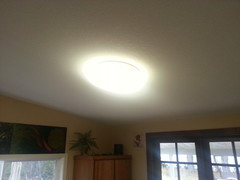
This post was edited by BiggerDiggler on Mon, Dec 9, 13 at 14:52
BiggerDiggler
Original Author10 years agoAnd here is a picture that shows somewhat the individual LED's with the factory-supplied shade removed. No attempt here to look like a "bulb!" You should be able to see that the LED diodes are arranged throughout the 21 inch diameter of the "pizza" shape, flat mounted to the metal frame of the fixture. The power supply is on the other side of the visible frame, as well as the circuit boards and other electronic paraphernalia. These fragile and vulnerable parts are completely shielded from the heat produced by the LEDs.
Some of the dark strips you see between the diodes are the wires connecting the diodes. I can't just grab an LED bulb after it has been running for an hour or so. But no matter how long these fixtures run, they stay cool to the touch. Which in my opinion drastically increases longevity.
Speaking of longevity, while I was installing the first one of these fixtures, klutzy me dropped one from an 9 foot ceiling and it came crashing down on the floor. Hooked it up anyway and not one diode was harmed. Try doing that with your standard incandescent bulb or fixture and see what happens!
Someday, I want to have guests over and take the shades off and dress up in a Martian costume.......like I had just been "beamed down" by one of these fixtures!
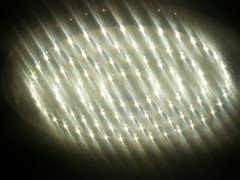
This post was edited by BiggerDiggler on Mon, Dec 9, 13 at 17:49
BiggerDiggler
Original Author10 years agoAnd here is a newly-installed bathroom fixture, with five brand new Cree 60-watt equivalent LED bulbs installed. With these bulbs installed, this fixture draws around 65 watts of juice and allegedly produces 4,000 lumens; whereas the ceiling fixtures - which are much brighter in my opinion - draw just 40 watts, producing a claimed 2200 lumens of lighting.
Just the five Cree bulbs installed in the bathroom fixture were more expensive than the entire ceiling fixture! To give credit where due though, the LED bulbs are a LOT brighter than five, 60 watt incandescent bulbs.
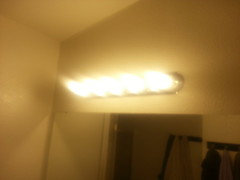
mattpete
10 years agoPart of the price difference is that 5 bulbs need 5 drivers. With one lamp, all you need is one driver.
I'm having the same conundrum with an MR16/GU10 fixture we have in our basement. Our au pair leaves it on all the time, and I go through bulbs left and right. But most LED Gu10 bulbs are crap, except for the new SORAAs that are coming out. But they are $30 a piece! Does it make more sense to replace the halogen lamps one-by-one as they burn out, or buy a a whole new light fixture that only takes two or 3 A19 led bulbs?
BiggerDiggler
Original Author10 years agoI think the photos I have posted make it obvious what I think. I would definitely recommend purpose-built LED fixtures, which I am confident based on my knowledge of LED technology, will actually last the 25 years that is often claimed for LED bulbs. Why? Because it is very obvious that the fixtures stay noticeably cooler than LED bulbs, and heat is the death of LEDs.
In addition, you are already thinking about replacing a fixture, so why not just do away with bulbs altogether.
Also remember this: LEDs are "solid state" technology, similar to thumb drives and the new SSD harddrives with no moving parts. Halogen is just an incandescent light with a sphere around it that contains inert gases, that make them brighter and last longer and is slightly more efficient. In the final analysis, halogen or no, incandescents are nothing more than a very controlled fire (which is why the light they put out seems so "natural.".........because a fire is about as natural as you can get. )
Additionally, Halogens aren't just hotter than normal incandescent bulbs, they are a LOT hotter. They are so much hotter in fact, that I am tempted to use them under my computer desk as a space heater! Albeit one that only draws 100 watts versus the space heater that draws 800 watts.
This post was edited by BiggerDiggler on Mon, Dec 9, 13 at 17:08
mattpete
10 years agoTechnically halogen's give off less heat than regular incandescents. For example, compare Philips 40 watt Halogena to regular 65-watt incandescent: both give off the same amount of light, but the regular incandescent gives off 25 more watts of heat!
I think what gave halogens such a bad name was the old capsule torchiere lamps that used tiny 500watt T3 bulbs. The bulbs were tiny, which concentrated the heat. I remember more than once having a moth or fly land on one of those bulbs and start smuldering!
BiggerDiggler
Original Author10 years agoThose opposed to the government regulations, and who are die hard incandescent fans can always buy halogen light bulbs. They are just efficient enough to squeak past the new regulations, yet they give off the same color index as incandescent. Still, in my opinion, they are a dead-end technology.
My prediction? When it costs $5 or less for a 60 Watt equivalent LED bulb, LEDs will become an economically irresistible force. My personal prediction is that will occur this year (2014). At that price, LEDs, while slightly more expensive than halogens and CFLs, will have a payback of less than six months. After that point for the next ten years or so, operating them will be virtually "free." It would seem obvious that all newly-constructed houses will be 100 percent LED lit by the end of 2014.
CFLs will die completely off in 2015, given that their electronics by then will be the same or more expensive than LEDs. I have taken apart both CFLs and LED bulbs (that were so cheaply made, the utility company gave them away), and the electronic innards - the expensive parts that is - are equally complex. However, the twisted glass part of CFLs is MUCH more expensive to make. By 2015, both CFLs and LEDs will cost about $2 or $3 apiece, so CFLs will die.
ionized_gw
10 years agoI look forward to the day when residential LED lighting is available at a reasonable price, a variety of color temperatures (my fav is 5000K) , with excellent color rendering, and a good power factor. Residential CFs have some serious drawbacks. I can never tell if they are optimized for frequent cycling (programmed start) or for long on times (instant start). Color rendering is poor and choice of color temperature are also poor. In addition to that, they have a poor power factor. Commercial, modular CFLs are better, but difficult for a consumer to get at a reasonable price. That is why I am sticking with my linear fluorescent where possible. I am reworking everything (T12) that I have, as it fails in most cases, to T8, programmed start ballasts with SPX lamps.
Halogens have a higher color temperature than regular incandescents and equal, excellent color rendering. LEDs seem to have a very high failure rate as indicated by my casual observation of truck tail lights and traffic lights. They are supposed to be durable, but in practice, it does not seem like it.
BiggerDiggler
Original Author10 years agotailights and traffic lights make the same mistake with LED's, and a mistake that bulb makers have devised elaborate Rube Goldberg work arounds to resolve. You cannot completely enclose LEDs, the heat buildup kills them.
ionized_gw
10 years agoI don't understand. Purpose-designed LED tail lights on trucks are poorly-designed? These are not replacement lamps for existing assemblies. How are they Rube Goldberg?
BiggerDiggler
Original Author10 years agoThe tailights are fully-enclosed, waterproof and allow no ventilation. Particularly in the summer, those tail lights can easily exceed the recommended maximum temperatures of LEDs by 30 or 40 degrees on a hot day. Is it any wonder they are short-lived?
The LED light bulbs have elaborate heat sinks designed in and sometimes even small fans in order to fit within the 130 year old edison sockets. Secondly, the bulb "shape" is unnecessary for maximum light output. The bulb shape was designed to give tungsten filaments a sealed vacuum. LED do not need this. They are at their best on a flat-mount surface with the individual diodes aimed appropriately, with a large frame to dissipate heat away from the diodes. The diodes emit light "directionally," instead of hemispherically, like incandescents do.
Hence my arguments that LED light bulbs are a "Rube Goldberg" contraption to implement space age technology (LED's are solid state, state of the art technology) into an ancient 130 year old form factor, designed just 15 years after the end of the Civil War, when everyone was tooling around in horses and buggys.
This post was edited by BiggerDiggler on Wed, Dec 11, 13 at 18:50
mattpete
10 years agoTaillights and street lights are also subject to vibration, high winds, and radical changes in temperature. My interior lights are not.
mattpete
10 years agoTaillights and street lights are also subject to vibration, high winds, and radical changes in temperature. My interior lights are not.
ionized_gw
10 years agoAnd the promises are and were similar for all.
This post was edited by ionized on Thu, Dec 12, 13 at 15:45
sjhockeyfan325
10 years agoWe have those same ceiling fixtures in several closets, small pantry and laundry rooms and over a portion of our bedroom where the ceiling lowers. They are quite good, and certainly better than overhead can lights (incandescent -- had them all over my previous home and hated them, the light output was atrocious).
andreark
10 years agoIf LED bulbs function at a cooler temp, why can't you replace an incandescent bulb with a higher lumen but cooler temp LED? For example, why can't I replace a 60 watt bulb ( 800 lumens) with a 9-13 W (1100 lumens) LED?
I am asking because the manufacturer of my outdoor fixture, which is not enclosed, recommends a 60 watt bulb.
It would be better if I could use a brighter bulb for the area.
andreark
ionized_gw
10 years agoThey make less heat/lumen, but they might not be able to tolerate as high a temperature. If your luminaire is closed, it might not work. If the heat source of the lamp is below temperature-sensitive components, it might not work.
andreark
10 years agoMy luminaire is not enclosed.
It is: Minka Lavery Sage Ridge⢠8281-A61I am sorry but I don't know what you mean by "If the heat
source of the lamp is below temperature-sensitive
components" Would you mind explaining?Thanks,
andreark
wws944
10 years agoandreark: I think a LED bulb would be fine in that fixture. In fact, given that the bulb is recessed up at the top, I bet a lot of the light from a regular incandescent bulb is wasted. So you might be able to get away with a 450 lumen-ish bulb - as long as it is the type that tends to emit light downward - as opposed to off the sides.
mattpete
10 years ago"If the heat source of the lamp is below temperature-sensitive components"
LEDs don't put off a lot of heat, but some of their electronic components are very sensitive to heat. In a well ventilated fixture, it is no big deal, but in a [too small] enclosed fixture, the heat build-up could damage the electronics.
So, what does "If the heat source of the lamp is below temperature-sensitive components" mean? Most A19 style bulbs have their electronics in their base, and if placed upside down, the heat will drift upwards towards the electronics. Depending on the design of the bulb and the enclosure, this may or may not be an issue.
Of course, for BR or PAR style lead bulbs, this is no big deal, as they are designed to be hung upside down in the first place.
juno_barks
10 years agoI was inspired by this thread to research LED fixtures for lighting my kitchen island. I found that Barnlight electric makes LED fixtures with a certain vintage vibe that I rather like. They are American made and use CREE lighting, with 2700K CRI90 850 lumens each.
However - one must make a choice between two types of LED lens, either flat or domed. I have found no information on the site about the merits of these two lens types. I'm guessing that the flat might direct the light straight down and the domed spread it more, but this is ONLY A GUESS. Does anyone out there know the difference or have experience with these fixtures?
Many thanks.
Here is a link that might be useful: LED light fixture from Barn Light Electric
juno_barks
10 years agoThe kind people at barn light electric sent me some pictures to clarify the LED lens issue. Appears to be largely cosmetic, hope the uploads work.
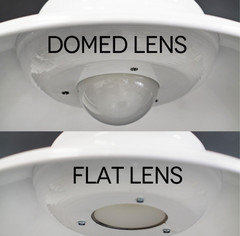
juno_barks
10 years agoHere is a data sheet on how the lens shape affects light output. The flat lens seems to allow more light to pass, but the dome gives a wider spread, or at least that is my interpretation.
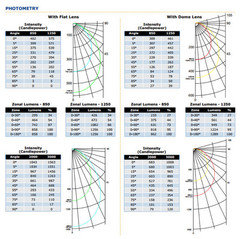
BiggerDiggler
Original Author10 years agoIs that an LED dedicated fixture, or is it one that you put in an LED bulb? It is hard to tell from the pic.
BiggerDiggler
Original Author10 years agoThe LED retrofit continues.......
Just came back from Costco, where they had awesome LED-dedicated porch lights for $19.99. So I bought two (remember, this is an entire fixture for less than half of what some LED bulbs were selling for in 2011!). Very well built, all-aluminum quality fixtures, with all of the electronics very tightly sealed. That turns out to be a big advantage in my opinion. Since there are never any bulbs to replace, it is much much easier to seal up the entire fixture. And since the LEDs are not forced into a misshapen bulb shape designed 15 years after the Civil War, there is a lot more room for the electronics and a lot more airspace to defuse heat.
It took me around five minutes to replace each fixtures and as I took out the old Edison fixtures, I marveled over the obvious quality advantage of the LED fixtures. Very well built.
I apologize for the scraped up paint around the new french door - it was just replaced (replacing a sliding door) and too cold to do the finish paintwork.
Update: It is night time and the rated lumens on these is 800, which is equivalent to one 60 watt incandescent. I can tell you for certain that these two new fixtures on the same porch are putting out a LOT more light than the two fixtures with 3 60 watt bulbs that they replaced. Which once again indicates to me that fixtures that are built with LEDs installed are MUCH better than bulbs.
2nd Update: As I played in the hot tub, I was just entranced by the beauty of the light coming out of these things......besides being clearly superior than LED bulbs in the AMOUNT of light they expel, the light itself is just stunningly gorgeous......
Am going back to Costco this morning to buy three more.
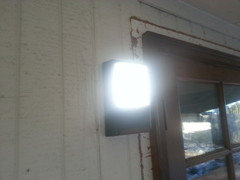
This post was edited by BiggerDiggler on Sun, Jan 5, 14 at 10:53
grannysmith18
10 years agoI have a Tech Monorail system with these very nice heads (please see my link). However, I also got the new electronic transformer made by Tech, which is much smaller and sleeker. In a little over a year I've had two of these transformers fail, though Tech did replace them; they claim they haven't run into problems with them.
It's rated for 300 watts, and I've had about 250 watts running, including 3 of these heads which take MR16 Halogen bulbs.
I'm wondering if lower wattage could solve the problem, which is why I'd like to try the LED replacement bulbs for these heads. Would I be OK, or is the fixture too enclosed and heat would build up and possibly do more damage?
I'm really at a loss. I've had all the fixtures on the rail tested, and none of them have a short.
Could I try the LEDs in these fixtures?Here is a link that might be useful: My tech lighting fixtures
David
10 years agoSeveral comments
1. The typical operating temperature for Led diodes is much wider i.e. most should operate between -40 to +140 degrees celsius.
Real example
The max junction temperature for a Cree XM-L Led diode is ~ 150 celsius or 50 above the boiling point of water.2. There is a wide selection of LED diodes on the market with a wide range of color, efficiencies, current drive, voltage, ...
3. A LED lamp's longevity is affected by how the lamp/ fixture designer design decisions for example-
i. Over driving the current at the expense of lifespan.
ii. Which LED components to use - more efficient vs greater max output vs cheaper (given the anticipated production run), ...
iii. The quality of the other necessary components - capacitors, resistors, ...
iv. The quality of the manufacturing process. SMT (surface mount technology) consistently beats the quality of manual soldering and individual wires.4. Active cooling (i.e. - fan) is no longer used - not effective or cost efficient, prone to failure and reduces the overall efficiency.
The use of the motherboard as a heat sink/ spreader is preferred.
The Switch lightbulb utilizes an inert liquid and convection circulation to sink the heat produced.5. The pricing will drop more when the the LED diode costs are reduced as well as when lighting device designers figure out how to reduce the BOM (bill of materials) cost and simplify the manufacturing process.
FWIW, the L prize bulb is not competitive with the Cree bulb (or even the newer Philips LED bulbs) from both a manufacturing and end user consumer standpoint.
6. From an electrical standpoint, the E26 connector is no less efficient than a GU24/ bi-pin connector / wire nuts.
7. The more advanced LED deployments today are done in aircraft, automotive and custom home designs where cost is less of a concern.
8. For the rest, it will take a while before more and better fixtures/ lamps designed with LEDs in mind appear since most folks are used to the traditional glass forms ( bulb, tubes).
Peke
10 years agoOur electrician installed 6" recessed lights in our kitchen and living room. We are slowly replacing the bulbs with LEDs so that means he used old technology lights, right? Otherwise there would not be a "bulb" to replace. He asked what kind of light and we said LED thinking that was all there was. I guess as the fixtures fail we will replace with LED fixtures.
We have had one LED bulb fail already. It has been in the recessed can less than a year.
We have one LED solar powered motion light on our front patio. It has been there two years and we love it. We also have an LED motion light under our carport that has been there two years. It has three sets of lights. One goes straight and the others go to the left and right. It has worked well except on the coldest nights (15ðF) when it would not come on at all. This one is NOT solar powered. We have it plugged in.
So do LED lights have trouble coming on in cold weather?
Are there LED porch lights that have bug lights (yellow)?
We can't leave our regular porch lights on because of the bugs. There are a lot of bugs at the lake!
Thank you, Peke


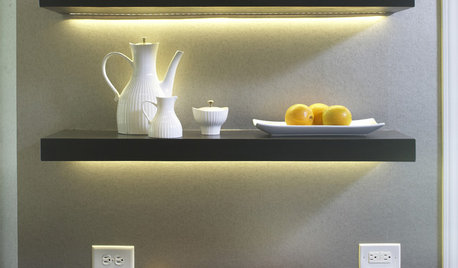
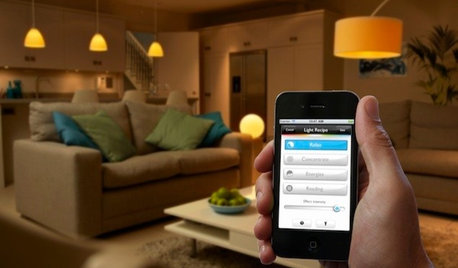
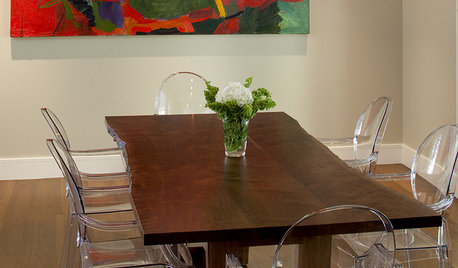
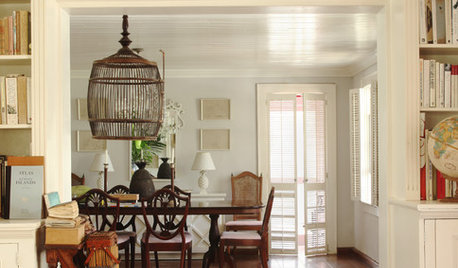
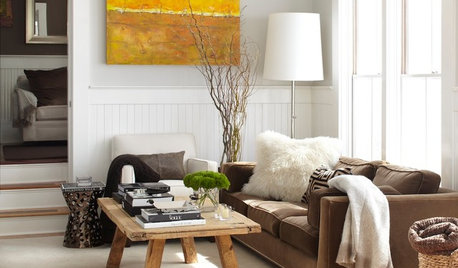
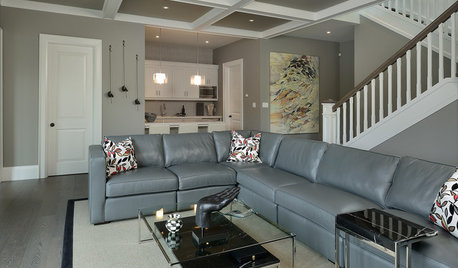
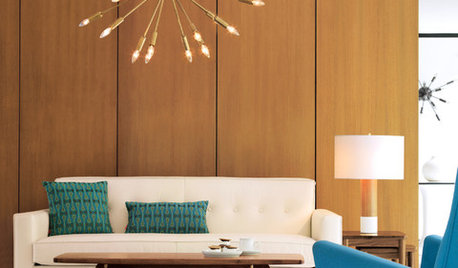
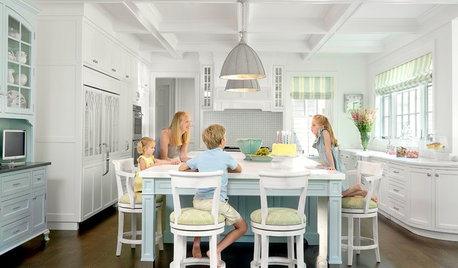






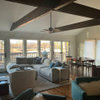
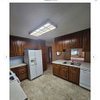
BiggerDigglerOriginal Author